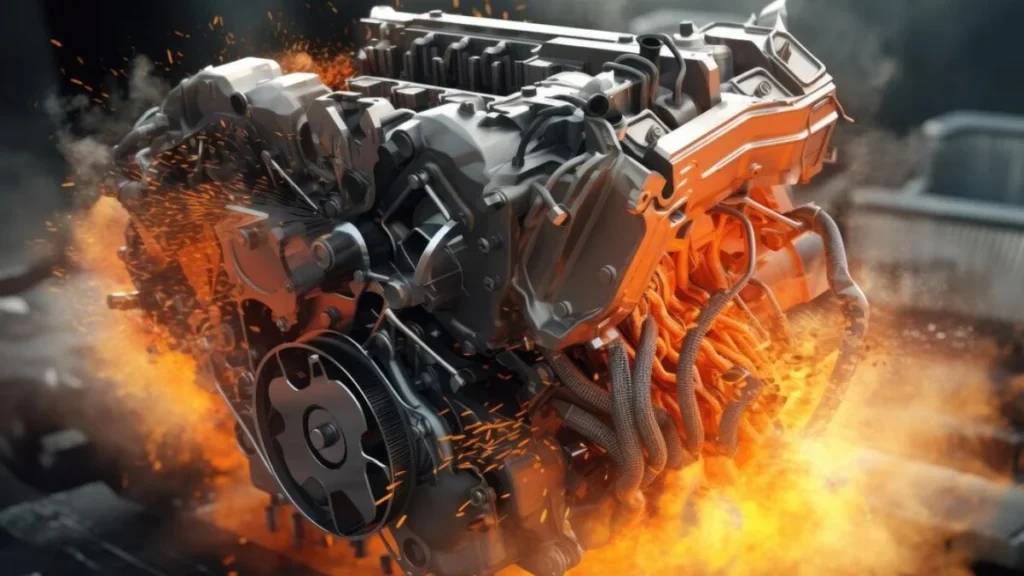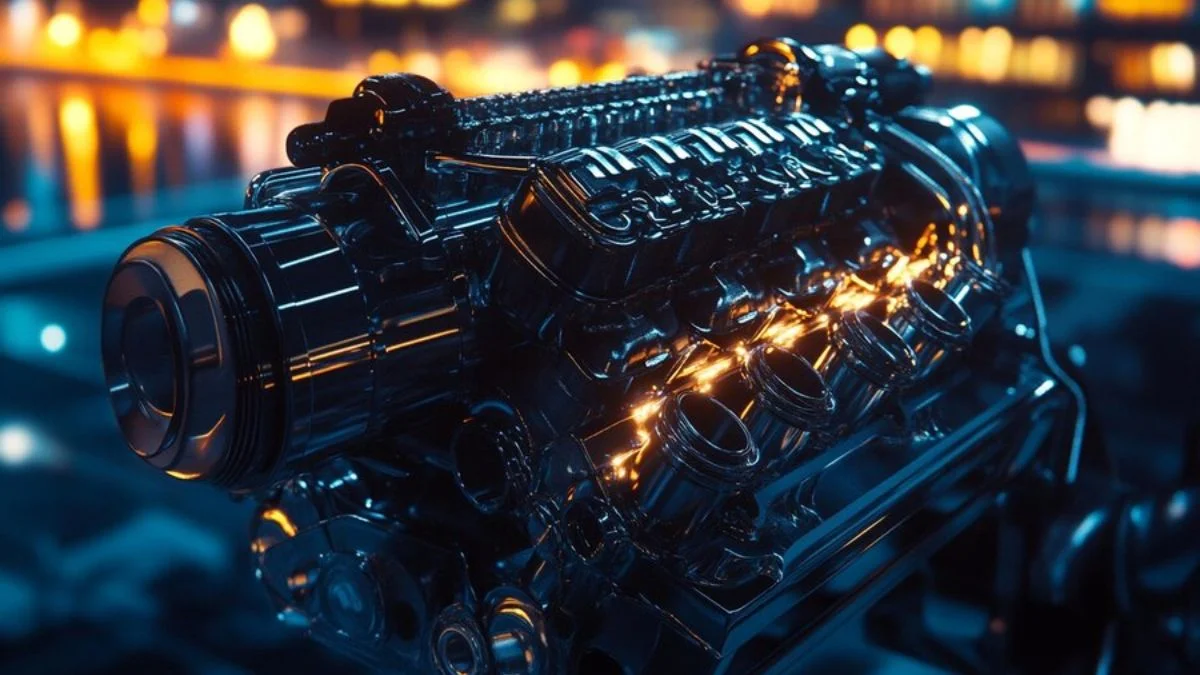The 2JZ engine, a hallmark of Japanese automotive engineering, has become an iconic symbol in the world of performance and tuning. Developed by Toyota in the early 1990s, the 2JZ engine was built with precision, durability, and immense power potential. Its capabilities quickly set it apart, gaining popularity among car enthusiasts, particularly in the JDM (Japanese Domestic Market) community. While initially designed for street-legal cars, the 2JZ engine has evolved into one of the most respected and sought-after engines in motorsports, tuning, and even drag racing.
The Origins of the 2JZ Engine
The 2JZ engine series made its debut in 1991, succeeding the 1JZ engine, which had already earned respect in the automotive world. Toyota engineers built upon the foundation of the 1JZ, aiming to create an engine that could not only meet but surpass expectations in terms of performance, reliability, and modifiability. The 2JZ engine was initially developed for the Toyota Aristo, known as the Lexus GS in international markets, but it truly gained its legendary status when it was used in the Toyota Supra, particularly the fourth-generation (A80) Supra.
The 2JZ engine came in two main variants:
- 2JZ-GE: The naturally aspirated version, which delivered smooth power and was reliable for everyday use.
- 2JZ-GTE: The twin-turbocharged variant, which became a powerhouse in terms of performance, widely regarded for its tunability and extreme power output.
2JZ Engine Specifications: A Closer Look
The 2JZ engine boasts a robust inline-six cylinder design, which contributed to its strength and balance. Here are the core specifications of the 2JZ engine:
- Engine Displacement: The 2JZ engine cc measures at 2,997 cc, just shy of 3 liters. This displacement gives it a good balance between power and efficiency, making it suitable for high-performance applications.
- Bore and Stroke: It has a bore of 86 mm and a stroke of 86 mm, giving it a perfectly square configuration, which allows for a balanced mix of power and revving potential.
- Valvetrain: The engine is equipped with a dual overhead camshaft (DOHC) setup with four valves per cylinder, making for a total of 24 valves. This design helps optimize airflow, resulting in better performance, especially at high revs.
- Fuel Delivery: The 2JZ engine uses an electronic fuel injection system that allows precise control of fuel delivery, which is crucial for performance and fuel economy.
These specs were designed not only to make the 2JZ durable but also to give it the potential for incredible power when tuned. The cars could range from mild to wild, depending on the modifications done.

Power Output: How Much Horsepower Can the 2JZ Handle?
One of the reasons the 2JZ engine became such a revered powerhouse was due to its incredible 2JZ engine hp output, especially when modified. In stock form, the 2JZ-GE (naturally aspirated) variant produced around 220 horsepower, while the 2JZ-GTE (twin-turbo) was capable of delivering between 276 to 321 horsepower, depending on the market and regulations (such as the Japanese “Gentleman’s Agreement,” which limited horsepower ratings on paper).
However, what truly set the 2JZ engine Supra apart was its untapped potential. With simple bolt-on modifications, the 2JZ-GTE could easily surpass 400 horsepower. More advanced modifications, including upgraded turbos, injectors, and tuning, have seen the 2JZ engine specs pushed beyond 1,000 horsepower. In extreme cases, professional tuners and race teams have even managed to extract up to 2,000 horsepower from the 2JZ platform, solidifying its place in motorsport history.
Why the 2JZ Engine is a Tuner’s Dream
These cars are particularly popular in the aftermarket tuning scene due to the engine’s inherent strength. Unlike many other performance engines that require significant reinforcement to handle higher power levels, the 2JZ-GTE’s stock internals are already capable of handling significant power increases. This is thanks in large part to its cast-iron block, forged steel connecting rods, and high-strength pistons, all of which contribute to the engine’s durability.
Key features that make the 2JZ a tuner’s dream include:
- Strong Bottom End: The cast-iron block and stout internals allow the engine to withstand the stress of high horsepower without requiring major internal upgrades.
- Turbos: The twin-turbo setup in the 2JZ-GTE is a major factor in its power potential. With stock turbos, it provides a solid foundation, but aftermarket turbos open the door to extreme power gains.
- Aftermarket Support: The 2JZ has one of the largest aftermarket parts ecosystems, with countless companies offering performance upgrades, including turbo kits, intercoolers, intake systems, exhausts, and more.
- Ease of Tuning: The electronic fuel injection system and strong aftermarket ECU (engine control unit) support make the 2JZ easy to tune for various setups, from street use to full-blown drag racing.
Iconic 2JZ Engine Cars
While 2JZ engine found its way into several Toyota models, it is most famously associated with the Toyota Supra. The fourth-generation Toyota Supra, also known as the 2JZ engine Supra, was launched in 1993 and quickly became an icon thanks to its sleek design, impressive performance, and, of course, the 2JZ-GTE engine under the hood. The Supra became a poster car for enthusiasts and gained even more attention with its appearance in popular films like The Fast and the Furious.
Other notable cars that were powered by the 2JZ engine include:
- Toyota Aristo (Lexus GS): The 2JZ engine was first introduced in this luxury sedan, marking Toyota’s entry into the high-performance luxury car market.
- Toyota Soarer: This grand tourer coupe was another platform that utilized the 2JZ engine, blending luxury with performance.
- Toyota Chaser: A favorite among drift enthusiasts, the Chaser combined four-door practicality with the potent power of the 2JZ-GTE engine.
- Toyota Crown: Known for its luxury, the Crown also benefited from the 2JZ engine’s performance, particularly in its high-end variants.
These cars, especially the 2JZ engine Supra, have left an indelible mark on car culture worldwide, and their popularity continues to soar among collectors and enthusiasts alike.
2JZ Engine in Motorsports
The 2JZ engine’s capabilities were not confined to street use. Over the years, it has earned a solid reputation in various forms of motorsports. The engine’s power potential and reliability make it a favorite in:
- Drag Racing: Tuners have consistently pushed the 2JZ engine into the stratosphere of power outputs, making it a staple in drag racing. Cars equipped with highly modified 2JZ engines have set numerous quarter-mile records.
- Drifting: The strong, torquey inline-six configuration of the 2JZ makes it a perfect engine for drifting. Many professional drift cars, including those competing in Formula Drift, have been retrofitted with 2JZ engines.
- Time Attack and Circuit Racing: The engine’s balance and high-revving capabilities also make it a strong contender in time attack events, where cars are pushed to their limits on race tracks.
The Legacy of the 2JZ Engine
The legacy of the 2JZ engine extends far beyond its years of production. Its reputation for reliability, power, and versatility has cemented its place in the pantheon of great engines. Even today, decades after it was first introduced, the 2JZ is still a benchmark for performance engines, often compared to newer powerplants that aspire to match its legendary status.
The resurgence of the Toyota Supra in 2020, while powered by a different engine (a BMW-derived B58 engine), has reignited interest in the original 2JZ engine Supra, with many enthusiasts considering it the pinnacle of Toyota’s engineering. The 2JZ remains a symbol of the golden era of Japanese performance cars, a time when manufacturers pushed the boundaries of what was possible with internal combustion engines.
Conclusion
The 2JZ engine is more than just a powerhouse—it’s a testament to Toyota’s engineering prowess and a symbol of the golden age of Japanese performance cars. Its robust design, tunability, and reliability have made it a favorite among enthusiasts and tuners for decades. Whether in the Supra, Aristo, or Soarer, the 2JZ engine has left an indelible mark on the automotive world. Even today, as car technology advances, the 2JZ remains one of the most celebrated engines, standing as a true masterpiece of Japanese automotive history.
Frequently Asked Questions (FAQs)
What is the displacement of the 2JZ engine?
The 2JZ engine cc is 2,997 cubic centimeters (3.0 liters), which provides a balanced combination of power and efficiency, making it suitable for high-performance applications.
What cars came with the 2JZ engine?
The 2JZ engine cars include the Toyota Supra (most famously the fourth-generation A80 model), Toyota Aristo (Lexus GS), Toyota Soarer, Toyota Chaser, and Toyota Crown.
What is the horsepower of the 2JZ engine?
The 2JZ engine hp varies by model. The naturally aspirated 2JZ-GE produces around 220 horsepower, while the twin-turbocharged 2JZ-GTE delivers between 276 to 321 horsepower. With modifications, the engine can easily exceed 1,000 horsepower.
What makes the 2JZ engine so popular in the tuning community?
The 2JZ engine is known for its strength, durability, and modifiability. Its robust cast-iron block and strong internals make it capable of handling extreme power levels, making it a favorite among tuners and motorsports enthusiasts.
What are the key specifications of the 2JZ engine?
The 2JZ engine specs include a 3.0-liter inline-six cylinder configuration, 86mm bore and stroke, DOHC with 24 valves, and an electronic fuel injection system. These specs make it a balanced engine for both performance and longevity.
Why is the Toyota Supra often associated with the 2JZ engine?
The 2JZ engine Supra, specifically the fourth-generation (A80) Toyota Supra, became iconic due to the combination of the 2JZ-GTE engine’s performance capabilities and the Supra’s sleek design. It remains a symbol of the JDM performance era.









